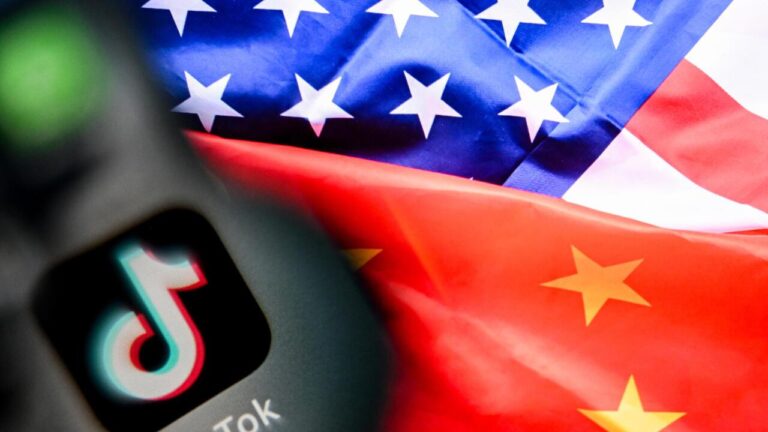The Ongoing Debate Over a Nationwide TikTok Ban: Security, Policy, and Global Implications
Why a TikTok Ban Continues to Be a Considered Measure Amid Security Worries
National security concerns remain at the forefront as TikTok’s data management practices undergo persistent examination. Analysts specializing in Chinese corporate and governmental affairs highlight that TikTok’s affiliation with its Beijing-based parent company, ByteDance, sustains apprehensions about potential foreign access to sensitive American user data. Although TikTok has introduced initiatives such as increased data transparency and proposals for localized ownership, unresolved privacy issues keep the platform under intense scrutiny by U.S. lawmakers.
Several critical elements complicate the decision-making process for regulators and security experts:
- Data Jurisdiction: The physical and legal location of U.S. user data storage is pivotal for national security assurance.
- Surveillance Risks: Concerns persist about possible influence or coercion by Chinese authorities over ByteDance, raising fears of covert monitoring.
- Geopolitical Dynamics: The broader context of U.S.-China relations heavily shapes regulatory approaches toward Chinese technology companies.
| Key Factor | Role in Security Assessment |
|---|---|
| Data Storage Sites | Hosting data in U.S. centers may reduce some security vulnerabilities. |
| Corporate Openness | Efforts toward transparency are ongoing but have yet to fully alleviate concerns. |
| Adherence to Regulations | Compliance with U.S. legal standards remains inconsistent and under continuous evaluation. |
Insights from Experts on Chinese Tech Influence and U.S. Security Strategies
In light of mounting worries about data protection and national defense, specialists stress that U.S. policies aimed at Chinese technology enterprises are essential for safeguarding critical information. The controversy surrounding TikTok’s operations in the U.S. market exemplifies broader fears about foreign control and manipulation. Authorities knowledgeable in Chinese business-government relations argue that despite political resistance and regulatory challenges, limiting platforms like TikTok remains a justified and necessary approach. These actions are part of a wider governmental effort to mitigate risks related to data exploitation and potential propaganda by entities linked to the Chinese state.
Crucial factors shaping this debate include:
- Recognizing the dual nature of Chinese tech firms as both commercial entities and instruments of state policy
- Balancing digital freedom with imperatives of national security
- Assessing vulnerabilities in technology supply chains and protecting intellectual property rights
| Policy Dimension | U.S. Goal | Chinese Tech Sector Response |
|---|---|---|
| Data Protection | Prevent unauthorized data access | Implement stronger encryption and local data storage |
| Market Regulation | Limit foreign platform operations | Engage in lobbying and seek alternative markets |
| Supply Chain Security | Safeguard critical infrastructure | Diversify suppliers and form new partnerships |
Broader Effects on U.S.-China Relations and the International Technology Sector
The intensified examination of TikTok reflects a larger challenge in the relationship between the U.S. and China, where technology and security concerns are deeply intertwined. This ongoing discourse marks a transformation in governmental attitudes toward Chinese tech companies, driven by fears over data privacy breaches, influence operations, and strategic leverage. TikTok has become a symbol of a new geopolitical reality where digital platforms serve not only commercial purposes but also as instruments in global power struggles. Heightened scrutiny may trigger retaliatory actions from China, further complicating diplomatic and economic interactions.
Globally, these developments accelerate trends toward technological decoupling, prompting multinational corporations to reassess their supply chains and digital business models. Industry experts observe that governments worldwide are revising policies to strike a balance between fostering innovation and ensuring security, potentially reshaping international standards and competitive landscapes. Key emerging priorities include:
- Strengthening regulatory measures to manage cross-border data transfers and cybersecurity risks.
- Forming strategic alliances focused on technological autonomy and resilient supply chains.
- Adapting corporate strategies to operate effectively within a fragmented, geopolitically influenced market.
| Influencing Factor | Impact on U.S.-China Relations | Consequences for Global Tech Ecosystem |
|---|---|---|
| Data Security | Growing distrust leads to stricter regulations | Increased demand for secure, localized technology solutions |
| Market Accessibility | Possible limitations on Chinese tech companies | Fragmentation and regionalization of global markets |
| Collaborative Innovation | Decline in joint R&D initiatives | Slower pace of worldwide technological advancement |
| Geopolitical Competition | Heightened diplomatic friction | Realignment of international technology partnerships |
Strategic Guidance for Policymakers Balancing Privacy and Economic Growth
Policymakers must carefully navigate the tension between protecting national security and promoting economic innovation. Establishing clear and transparent regulatory frameworks that define data protection requirements while acknowledging the geopolitical origins of digital platforms is essential. These frameworks should safeguard user privacy without unduly restricting international technological collaboration or stifling market competition.
Experts advocate for a comprehensive approach that includes:
- Routine compliance audits of foreign-owned apps to verify adherence to domestic privacy laws.
- Strengthened partnerships between tech companies and government bodies to create secure data-sharing mechanisms.
- Investment in public digital literacy programs to empower users about their privacy rights and data security.
- International cooperation aimed at harmonizing data governance standards to ease geopolitical tensions.
| Policy Area | Main Goal | Primary Challenge |
|---|---|---|
| Data Privacy | Secure user information | Enforcing regulations across international borders |
| Economic Development | Foster innovation and market growth | Balancing openness with security concerns |
| National Security | Prevent exploitation of data | Accurately identifying genuine threats |
Conclusion: The Future of TikTok in the U.S. and the Broader Digital Security Landscape
As deliberations over TikTok’s status in the United States continue, experts maintain that a ban remains a plausible option given persistent concerns about data security and potential Chinese government influence. With regulatory pressures mounting and geopolitical tensions showing no signs of abating, the platform’s future is uncertain. This ongoing situation highlights the intricate nexus of technology, national security, and international diplomacy, with stakeholders closely monitoring developments that will shape the digital landscape for years to come.







